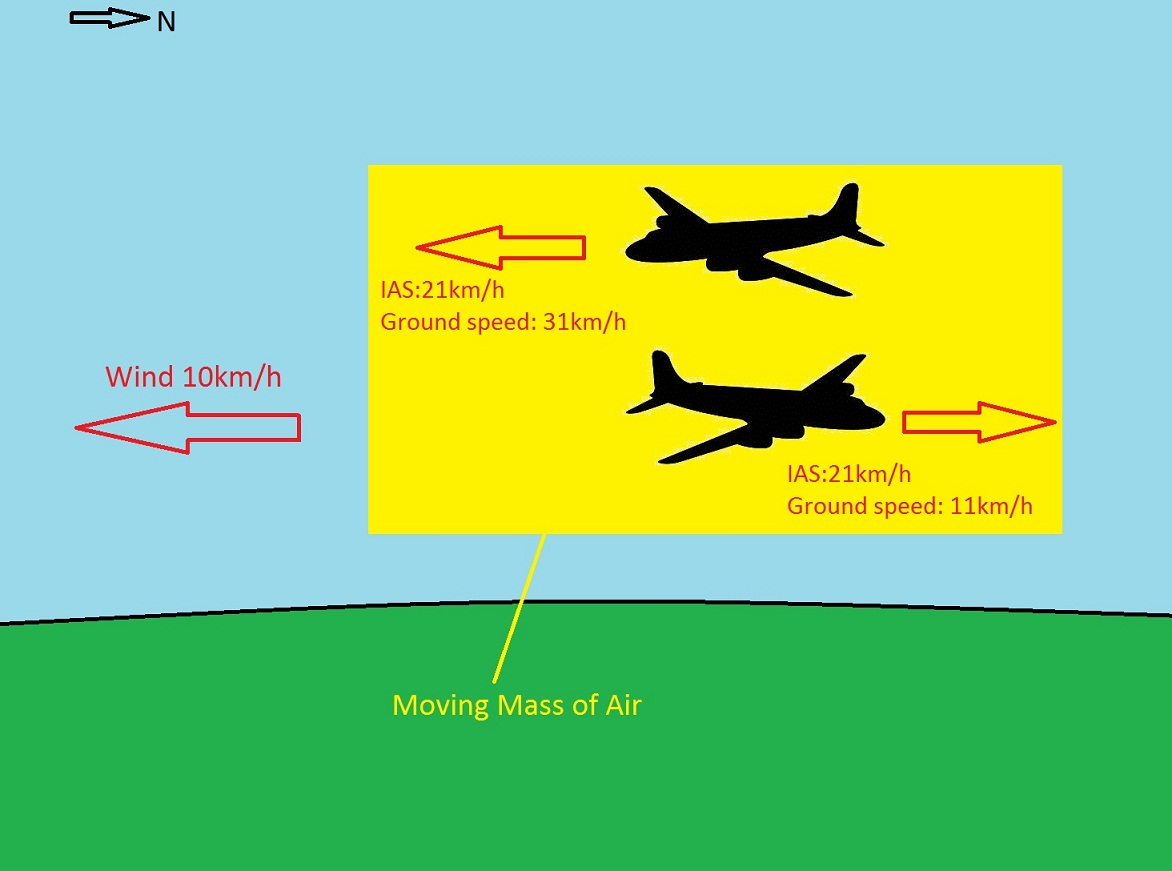Heya gents,
Just a quick question regarding my understanding on airspeed vs groundspeed.
The plane's stalling speed is 20kmh, so if i'm travelling at 21kmh, it's totally fine.
The wind is from north, at 10kmh. The airspeed now reads 21kmh, and ground speed is 11kmh, plane is flying fine.
Now the plane turns south, assuming the wind is still at 10kmh, the plane now needs to travel at 31kmh groundspeed to maintain proper flight? The airspeed will read 21kmh, am i right?
The above assumes all things being equal with plane perpendicular to the ground and no air density problem.
Would appreciate if any gent can advice.
Regards,
Charles
Just a quick question regarding my understanding on airspeed vs groundspeed.
The plane's stalling speed is 20kmh, so if i'm travelling at 21kmh, it's totally fine.
The wind is from north, at 10kmh. The airspeed now reads 21kmh, and ground speed is 11kmh, plane is flying fine.
Now the plane turns south, assuming the wind is still at 10kmh, the plane now needs to travel at 31kmh groundspeed to maintain proper flight? The airspeed will read 21kmh, am i right?
The above assumes all things being equal with plane perpendicular to the ground and no air density problem.
Would appreciate if any gent can advice.
Regards,
Charles



Comment